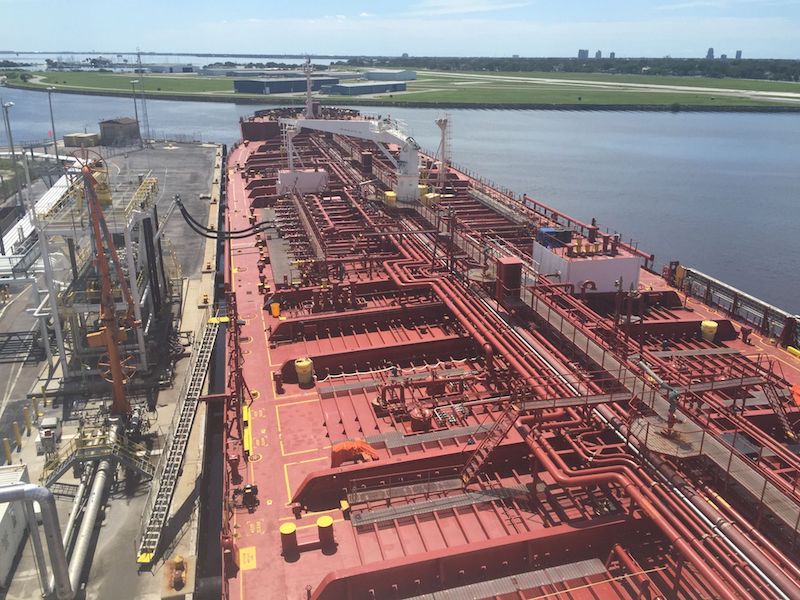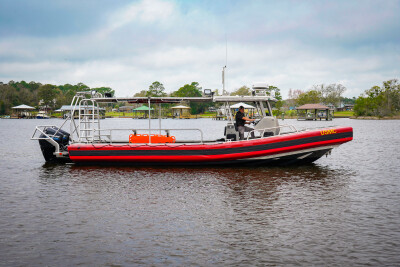I support the Jones Act for reasons that have little to do with freight economics, one of my business specialties. I will leave it to the trade associations, ship-owners, and other bloggers to wave the flag.
I also support the recent waivers of the Jones Act to allow refined products to be brought into the Southeastern U.S., and that’s the focus here. (The waivers are effective through Sept. 22.)
The recent duo of 500-year storms, hurricanes Harvey and Irma, which delivered knock-out punches to ports and facilities in Texas and Florida within a two-week timespan, had significant impacts on shipping. In this case, the story is very much about energy — crude oil and especially refined products because Texas is a leading origin of waterborne cargoes, and Florida (lacking refineries and pipelines) is a huge consumer of products coming in by water.
As readers know, shipments between two U.S. ports must be on Jones Act-qualified vessels, which (oversimplifying) must be U.S. built, owned, and crewed. Again oversimplifying, the Jones Act fleet of oceangoing tankers (typically 45,000-50,000 deadweight) and oceangoing barges (often articulated tug-barges or ATBs) plays an integral role as part of highly complex refining and product distribution supply chains. The tankers and barges complement pipelines (domestic distribution of refined products) and foreign-flag tankers (international imports of products coming out of refineries). In normal times, the system works properly, meaning that end users are confident that gasoline (maybe originating from Houston, but maybe from Rotterdam) is available for automobiles, diesel fuel for machinery, and jet fuel at the airports. Freight rates may be profitable for their owners, or they may not be, but the market clears. Vessels are available to load their cargoes.
But what if the vessels are not available? That’s what happened in late August and early September. As refineries along the Texas coast closed, parts of the Jones Act fleet (along with numerous foreign vessels) sat offshore waiting for facilities to re-open. Then in the days leading up to Hurricane Irma, empty vessels positioned in the Atlantic after discharging cargoes “sheltered in place,” waiting out Irma before ballasting back towards loading areas in PADD 1 — the U.S. Gulf. In the following days, the long lines of cars waiting to fill up were a regular feature on the nightly news.
Analysis prepared by Court Smith of Shipping Intelligence and Analytics supports the notion of a temporary reduction in available Jones Act tanker capacity. Smith, whose career has included stints in the U.S. Coast Guard and then work as an analyst with well-known tanker brokerage shops, looked at the more than three dozen Jones Act-qualified oceangoing tankers, mostly products/chemical carriers, in the U.S. Atlantic waters.

The numbers, derived from a multivariable analysis of AIS data, demonstrate the shortage of available capacity. In mid-August, the 41% utilization is indicative of the generally lackluster market. Fast forward to just before Labor Day on Sept. 4 when utilization drops to a paltry 32%. Viewers of AIS screens (or webcams at beaches) will recall pods of idle Jones Act tankers sitting off New Jersey or Delaware at this time. As ports opened up in Florida to receive product from now-opened refineries in Texas (and elsewhere in the U.S. Gulf and the mid-Atlantic states), the Jones Act tanker fleet went into overdrive in mid-September, with utilization up to 49%. Indeed, often media shy owners of Jones Act tankers and barges were issuing press releases trumpeting their frenzied activity resupplying terminals in Florida.
In reality, only a handful of charters on non-Jones Act tonnage, permitted under the two waivers (the first on Sept. 8, and the second on Sept. 14) seem to have been concluded. Indeed, increased imports from foreign origins (notably North Europe, but also South American refineries) appear to have filled in much of the slack while a portion of the Jones Act fleet was unavailable. But the waivers, very much about ships sheltering due to Hurricane Irma and therefore out of position to load, very sensibly had a short time fuse. Policy makers looking at Smith’s picture of the fleet can work from solid analytics, and keep cargo flowing as it needs to.
So, is it possible to agree with the waivers while still supporting the Jones Act? The numbers presented here (or the pictures from the beach at Asbury Park, N.J.) don’t lie. The folks in Washington, D.C., made the correct call.






